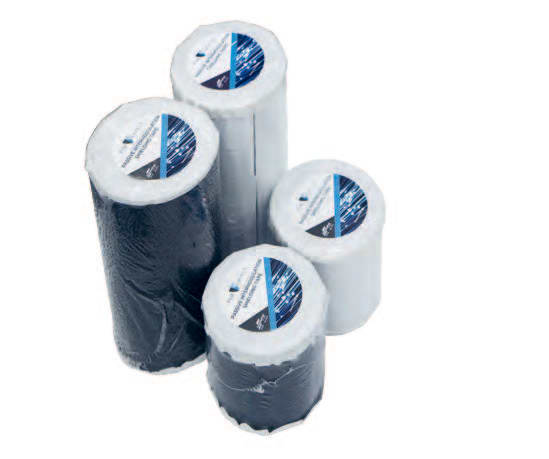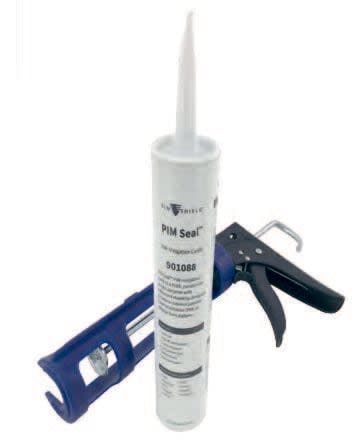Passiv Intermodulasjon (PIM)
Passiv Intermodulasjon (PIM)
I dagens raskt voksende telekommunikasjonsmiljø er det viktig å opprettholde kapasitet og nettverksytelse. En av de vanligste utfordringene operatører møter er Passiv Intermodulasjon (PIM), en subtil, men betydelig kilde til signalforringelse som kan påvirke kvaliteten på tale-, data- og videotjenester.
Hva er PIM, og hvorfor er det et problem?
Passiv Intermodulasjon (PIM) oppstår når to eller flere signaler ved ulike frekvenser interagerer i en passiv, ikke-lineær forbindelse, og genererer uønskede intermodulasjonsprodukter. Disse tilleggssignalene kan forstyrre de primære signalene, noe som resulterer i signaltap, brutte samtaler og økt nedetid i nettverket.
Ekstern PIM refererer til PIM-forstyrrelser som oppstår utenfor selve nettverksutstyret, ofte på grunn av signalinterferens fra eksterne metallobjekter i nærheten av antenner eller kabler. Denne typen PIM kan være spesielt utfordrende å identifisere og utbedre, siden kilden til forstyrrelsen befinner seg utenfor den kontrollerte telekommunikasjonsinfrastrukturen.
Do you need help?
Løsning av PIM med FIMOs PIM Shield
Vi tilbyr løsninger som effektivt reduserer PIM og forbedrer nettverksytelsen. Her kommer FIMOs PIM Shield-portefølje inn som en verdifull ressurs. FIMO, en ledende aktør innen telekommunikasjonskomponenter, har utviklet en spesialisert produktserie som er designet for å håndtere PIM-utfordringer på en effektiv måte, slik at nettverket oppnår bedre stabilitet og ytelse.
Feilsøking av PIM er en kritisk, men ofte tidkrevende prosess. Den innebærer først og fremst å identifisere kilden til PIM-forstyrrelsene, enten disse oppstår internt i nettverkskomponenter som koblinger, kabler eller antenner, eller eksternt i omgivelsene, som for eksempel metallgjenstander i nærheten av basestasjoner. PIM-testproben benyttes i kombinasjon med annet test- og måleutstyr for å nøyaktig identifisere eksterne PIM-kilder ute i feltet.
Når kilden til PIM er identifisert, er neste steg å implementere skjermingsløsninger som forhindrer videre forstyrrelser og beskytter nettverket mot nye PIM-generasjoner. Her bruker vi FIMOs PIM Shield-produktportefølje som en pålitelig ressurs for å beskytte mot støy og sikre optimal nettverksytelse.
Ulike løsninger
PIM Shield Mitigation Paint er en ledende akrylpolymer med forbedret elastisitet, designet for å redusere ekstern passiv intermodulasjon ved mobilbasestasjoner. Malingen er beregnet for store, flate overflater og skal ikke påføres direkte på antennemonteringsstrukturer.
Nøkkelfunksjoner: Lav PIM Høy RF-demping Sprekkbestandig UV-stabil akryl Vannbasert Ikke-brannfarlig

PIM Shield Tape er en permanent RF-barriere som kan installeres over kilder til PIM for å umiddelbart forbedre ytelsen på stedet. Tapen er designet for å feste seg til et bredt utvalg av overflater, inkludert metaller (galvanisert stål, aluminium), takbelegg (EPDM, TPO), flerlags takbelegg (SBS modifisert bitumen, asfalt BUR), betong, murstein og tre. Den ekstra tykke, svært tilpasningsdyktige syntetiske harpiksbaserte limen gir sterk heft til ujevne overflater

PIM Seal Mitigation Caulk (fugemasse) er en tykk, ledende akrylpolymer med forbedret elastisitet, designet for å redusere ekstern passiv intermodulasjon ved mobilbasestasjoner.
Fugemassen kan påføres direkte på metallgrensesnitt på antennemonteringsrammer for å blokkere RF-energi fra å nå ikke-lineære koblinger og dermed redusere PIM.

Har du produktspørsmål, eller ønsker å snakke med oss om rådgivning?
Ta kontakt så vil vi hjelpe deg med å finne riktig løsning til ditt prosjekt





